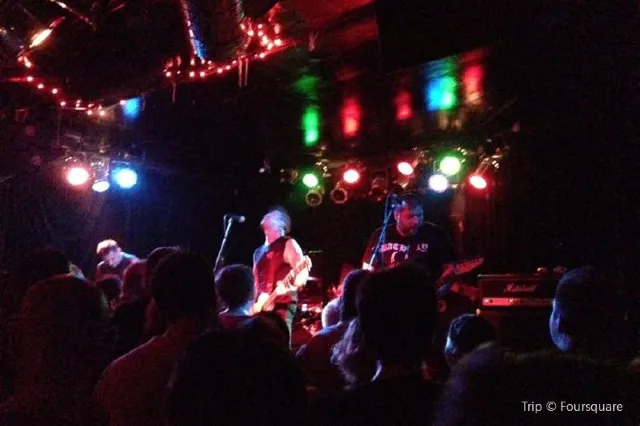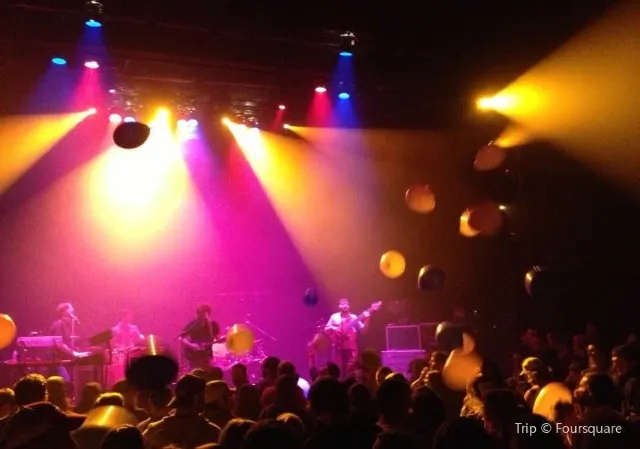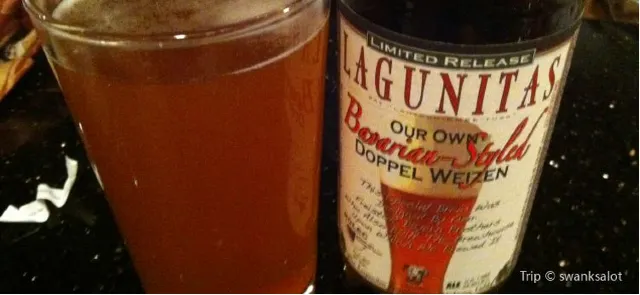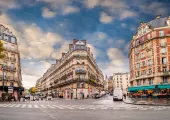Top 8 Venues for Chicago Blues: Nightlife Chicago
Catalogue
- Chicago Jazz:
- House of Blues Chicago:
- B.L.U.E.S.
- Rosa’s Lounge:
- Buddy Guy's:
- Smoke Daddy:
- Kingston Mines:
- Lagunitas Brewing Company:
- Blue Chicago:
Show More
Chicago, a city like no other and should rightly be called the House of blues Chicago. Every city has its own culture, vibe, food and music and Chicago are unique with the blues.! Its Chicago jazz background also lets us call it Chicago jazz. Chicago is a city of marvels in terms of its huge number of museums, awesome opportunities in theatre, arts and entertainment, innovative and path-breaking architectural designs ably supported by a Michelin winning dining scenario.
What more could you ask for from any city? Music! Ah yes, we can add the House of Blues Chicago music to your wish-list because Chicago blues and Chicago jazz do form a part of the history of the enlivened Chicago City.
House of Blues Chicago has something for everyone So, let’s explore the history behind the music scene, the best blues clubs and areas of music be it the blues or jazz that make House of Blues Chicago what it is and also why it is unique. Let’s get started!
Have you been to the Chicago Jazz Festival yet? This is an annual fest held by the Cultural Affairs and Special Events Department meant to encourage local jazz artists and invites global jazz artists to present their music for an extended festive period of 10 days and nights too! The 2019 version scheduled Aug 23rd to 1st of 2019 has the Chicago Jazz Institute at the helm.
Do you know how this house of blues Chicago festival started? Duke Ellington the famed band-leader, musician and composer died in 1974 summer. As a tribute to him several musicians and jazz groups got together at Grant Park’s south end also called the Old Band Shell to organize a show. And this show was attended by all of Chicago jazz lovers numbering about 10,000 then!
The crowds grew at such his memorial concerts and drew international attention and huge crowds of 30,000 or more and became an annual affair. The Memorial Concert for John Coltrane in 1978 by Chicago's Council of Fine Arts was also a huge success. The Chicago Jazz Institute also scheduled their August concerts. Thus, nearly three main concerts were scheduled in August.
The Mayor's Special Events Office suggested clubbing these Chicago jazz events into the first annual Chicago Jazz Festival which now hosts the 41st version in 2019. The event at the all-new Petrillo Music Shell had a Coltrane night, an Ellington night and nearly five programs from the Jazz Institute.
The initial festival drew crowds exceeding 125,000 Chicago jazz lovers who came to jam, picnic, dance and listen to music. That’s how the Jazz Fest came to be held every year in August just a week before Labor Day. This year’s venues are the Millennium Park and Chicago Cultural Center celebrating from 11 in the morning to 9 at night and the best part? Entry is free!

Did you know that Chicago blues comes in a favorable third amid the blues-capitals worldwide and is headed by Austin and New York on the blues music front? Yes, the biggest names of the history of blues found their incubator in Chicago. It was here that fame was bestowed on many African-American blues-musician who followed the American migration route. And then headed north-bound to use the Chicago platform to test their new-age modern music also known as the blues. Initially in the 30s and almost a decade later they struggled on the road to fame playing at the Maxwell market place, using the rent-a-musician party platform, doing street shows and community shows of the local Afro-Americans. And they never gave up using the naturally receptive Chicago as a base. Some of them who succeeded big-time were Muddy Waters, Buddy Guy, Charlie Musselwhite, Little Walter, and Howlin’ Wolf.
The restaurant House of Blues is a successful Chicago jazz show-restaurant experience. Why? Every Sunday has the gospel band and the AYCE brunch. On weekdays one can stay engrossed in the show-on-the-walls of folk art, blues memorabilia and more. The menu has the gumbo bowl, staples from the south and maple syrup and butter accompanied with freshly baked bread.

You can get the main course at 14USD, and they serve dinner and lunch Monday through Saturday. It is easy to get there by bus. Use the rush hours buses Brown, Blue, Green, Pink, Orange, and Purple to the Clark or the El stop of the Red ones to Grand. The bus numbers #36, #29, and #62 can be used. You can contact them at 329 North Dearborn Street, between Lower Wacker Drive and Kinzie Street. Their web address is http://www.houseofblues.com/venues/clubvenues/chicago/dining.php.
Remember how important labels were to the records and fame of the early music artists? The Chicago blues style has many label-specialists to date. The 1950s Chess Records of the Chess brothers Leonard and Phil blazed the new trend across the Midwest with artists like Willie Dixon, Howlin' Wolf and Muddy Waters on their label. They even formed a subsidiary in Checker Records with artists like Bo Diddley and Sonny Boy Williamson. Cut to the modern age where these labels are owned by Geffen Records, a wholly owned subsidiary of Universal Music.
Have you been to Chicago blues touting Jazz Record Mart in Chicago? 1953 started Chicago jazz famed Delmark Records of Bob Koester is still the oldest and USA’s independent record label. Beginning in St. Louis, Coster moved in 1958 to Chicago and still owns Chicago’s Jazz Record Mart!
Delmark became famous with blues and jazz specialists like Magic Sam, Sleepy John Estes, and Junior Wells and even mentored the new record label of Alligator Records formed by Bruce Iglauer and Earwigs Records with Michael Frank as their CEO. 1971 launched Alligator Records saw its debut hit with Hound Dog Taylor the Chicago bluesman and have never looked back since then.

They have 300 releases and titles to their credit with artists like Koko Taylor, Lonnie Brooks, Son Seals, Albert Collins, and others. Alligator too believes in giving a leg up to supporting and spotting new talent in the blues and rock styles of music genres. Do as you would have others do unto you at Chicago is its inimitable style.
Want to enjoy the classic labels and styles of Chicago blues music? B.L.U.E.S. offers more direct interaction with music and its musicians, and in typical loud fashion, it is meant to be. A stone’s throw away from Kingston Mines, this Chicago jazz place is for you to drink and take in the blues. The focus is primarily blues music. Check out their jam-sessions every Wednesday.
If you need to take the bus in the rush hour, use the Purple, Brown to EI stop or the Red to the Fullerton stop which should cost you 8.74USD. They celebrate Saturdays from 8 pm to 3 am and the other days from 8 pm to 2 am.
The average beer here sets you back by 4USD. Read more about them at chicagobluesbar.com. An insider tip for the out-of-town blues fans- When you pay the cover charges at BLUES the promotional package provides entry to Kingston Mines free!
A little history on the Chicago blues first! The WW II saw the great exodus of the southern-based Afro-Americans. From the southern rural base of Georgia, Alabama, and Mississippi to northern cities like Chicago, Detroit, and St. Louis which were more industrially developed.

After all, a man has to live even during the war! The migrants were the original blues musicians who mingled with the original local inhabitants and improvised the history of blues in Chicago. And a new sound of blues was born from house of blues Chicago!
The early house of blues Chicago musicians perceived the changes required. It adapted their acoustic instrument-based Piedmont blues and Delta blues to newer versions of Chicago jazz with the harmonica, guitar, drums, and saxophone to develop the present version. Another key difference they brought in was that they explored all possible scale notes instead of sticking to the six-keynotes used traditionally.
The open-air marketplace on Maxwell Street where the locals were frequent became their natural testing grounds. As they struggled to pick up those tips essential to living while forging partnerships in jamming with similarly interested musicians.
The people seemed to love the horn-section in comparison to the southern raw naughty music with little or no accompaniment.
If you haven’t been to Rosa’s Lounge, you have missed an important destination on the house of blues Chicago circuit. Owned by Rosa and her Italian born locally famous drummer son Tony Mangiullo you have to experience the warmth and ambiance of this truly blues Chicago jazz club.
You can expect a crowd at the locally voted ‘friendliest Chicago blues club’ for their delectable food, personalized service and the best in contemporary blues music from the variations of local artists on their way up to fame. There is nothing like catching a promising band young and watching them grow! And yes, they steal the show with their local weekly session where you can jam with the Chicago blues.
The lounge is located at the crowded 3420 West Armitage Avenue and placed at the crossroads between the St. Louis and Kimball Avenues. Bus route numbers #73 and #82 can get you there. Since those with cars may find it difficult to travel so far to the West, you can try the L-stop of the Blue-line train and take a taxi from there. Its reasonable prices of 4USD for a beer is conducive to taking the day-off.
Those were the days of drums and harmonica being fused into Chicago blues music in the David’s “Honeyboy” Edwards band which Frank joined eagerly. In 1978 he set up the Earwig Music Company to let wider audiences and people hear the well-recorded unheard sounds of the house of blues Chicago artists who were excellent but under-represented.
He even recycled the classic albums from the Chicago blues music. Among the many who received recognition under him are Little Brother Montgomery, Lovie Lee, and Sunnyland Slim. Especially Little Brother Montgomery and his wife who released their un-commercialized recordings and there were a lot of them too through the Earwig Music Company.
Now, that’s right this Chicago jazz club was founded by Buddy Guy. The legendary Chicago blues musician can rightfully boast of having almost all the greats of the house of blues Chicago like David Bowie to Eric Clapton! The walls have a display of everything that can define music such as the guitar strap with polka dots used by Buddy Guy, several trophies, a few Grammies, well-worn and aged guitars and many accolades and gifts from musicians who trudged to fame from here.
If you wish to catch the legend singing in his home club, you must wait till the annual concerts in January or make do with the local talent with a promising future. Take any of these buses to 700 South Wabash Ave, and Balbo Avenue namely buses #2, #6, or #10. The Red bus to Harrison does provide for the EI stop which is close by.
They are entertaining each day every day with these timings. On Monday and Tuesday from evenings at 5 till mornings at 2 am. From Wednesday’s right up to Friday, they start early morning at 11 am and are open till 2 am. The weekends start at noon and run to 3 am on Saturdays, and 2 am on Sundays. Reach out and book today at buddyguy.com.

Did you know that the community of Chicago blues fought their jazz-way to top the R and B charts and are drawn upon as the early and even present-day influencers of modern-day jazz and blues?
The next generation of Chicago jazz artists and musicians from the house of blues Chicago like Lonnie Brooks, Son Seals, and Buddy Guy were well known for intermixing of the blues style with rock-music. However, a fair share of artists like Carey Bell and Nick Moss used significant influences from the older Chicago blues traditions on their way to fame. Alongside several record labels also became famous.
If food is important to you, then go to this kitsch-filled Chicago jazz Smoke Daddy club where the kitchen serves till the band plays its last number at 1 am. It isn’t all about the blues. You can hear the jazz, folk, country or rock musicians singing their acts. The barbeque feature and an upcoming 12-seater bar are things you will love and indulge in as you take in the music of a variety of artists.
Their address of 1804 W Division St and the crossroads of Honore and Wood Streets is easily accessible by the buses with route numbers #9, #50, #56, or #70. You can also use the Blue bus to Division station and get off at the EI stop. To view their calendar of events, visit their website thesmokedaddy.com. It is not expensive if the average spent is 15USD on the main course, right?
They work 11 to 11 morning to evening from Monday to Thursday with the Friday stretching to midnight. The weekends are special with early hours of 10 am to 12 midnight on Saturday and even a Sunday 10 to 10 session for the tippling weekenders.
Well, here’s where you could expect to hear Chicago jazz evolution tales including those on the Chicago blues! By the early 50s musicians like Memphis Minnie, Big Bill Broonzy and Tampa Red from the house of blues Chicago were already recognized. They were first-generation players of the classic Chicago-blues style known to us today.
Here’s a tidbit of blues and Chicago jazz music! Big Leon Brooks, Michael Frank, Jim Brewer, Billy Branch, Corky Siege, Liz Mandeville, Phil Baron, and Little Willie Anderson were some of Chicago’s home-grown talented artists. They made a big splash in the arena of Chicago blues music having seen and being involved in the movement from their younger and transitioning days.
If Chicago jazz quality is the standard for longevity, Kingston Mines just proved how they lasted so long. Try their plate of ribs, nachos and doc' swings as you take in the ambiance full of the Chicago blues live music. With two stages and a restaurant license, good food and the fact that minors too are welcome with their guardians, of course, sets Kingston Miles apart for their family-style ambiance.
And, they have been around for really long! Interestingly their Barbeque nights are a great draw. As they are open 8 pm to the morning 4 am after a full night of Chicago Blues. Saturdays have extended opening hours till 5 am!
This blues club at Lincoln Park has a one-of-a-kind two Chicago jazz band, two rooms and two stages overseen by Frank Pellegrino as the MC and plenty to hear. Local bands, touring bands, a moderate cover charge of 12-15USD and an upcoming refurbishment promises to elevate the Kingston Mines to new heights.
It’s easy to get to 2548 North Halsted Street and the crosses between the Wrightwood and Lincoln Avenues. If you need to use the buses, try route numbers #8 and #74 or the rush-hour Purple to EI stop. The Brown buses also work or the Red bus to the Fuller-Town stop. Visit their site kingstonmines.com for online bookings or call 773* 477*4646
The story of the evolution of Chicago blues continues here. The first-generation players of the early 50s proponents of Chicago jazz-like Memphis Minnie, Big Bill Broonzy, and Tampa Red were big names then and helped other artists succeed. Among them were the house of blues Chicago’s Willie Dixon, Howlin' Wolf, Little Walter and Muddy Waters who rose to prominence and fame.
It is happy hours and Chicago jazz just above the brewery at Lagunitas Brewing Company Taproom. Enjoy their brew from hops which are highly potent and just tapped and concocted.
From Wednesday’s to Sundays, the tiny stage set in the corner dominates the scene from 4:20 pm onwards. Unbelievable crowds line up to hear the local draws featuring the latest blues and the once in a while famous Diamond Jim Greene or equally awesome Jimmy Johnson.
Use the Pink Cermark to California bus or the route number #18, #21, #49, #94, #157 to reach them at 2607 West 17th Street between Rockwell Street and Washtenaw Avenue. For their schedules and reservations, check out the website lagunitas.com.

The Tavern owned by Ruby Lee Gatewood was one venue where every wannabe of the 30s Chicago blues has played and was known fondly as the ‘The Gates’ probably upwards to fame? Some of those big names of the house of blues Chicago were Carey Bell, Billy Branch, Big Walter Horton and Sugar Blue whose albums were recorded at Earwigs.
New technological trends after WW-II allowed the musicians to use the harmonica and electric drums to bring speedy music to the bars, chaos-filled roads, and market-shows in the era of new-age Chicago blues.
Just want to take in the soulful house of blues Chicago by female singers at River North? Then head to Blue Chicago when the rock and roll at the Hard Rock Café aren’t enough! This Chicago jazz club once spanned two locations and is River North's ultimate and longest-running blues club. Get to hear the contemporary local best and the likes of Claudette Miller or Shirley Johnson crooning soul and tales of grit for you. Getting to their location at 536 N Clark St and Grand Ave is easy if you take the bus routes #22, #11, #29, #147, #36, or #156. During the rush hours use the Merchandise mart stop of the Purple buses, the EI stop frequented by the Brown or the Red to Grand Avenue.
Take your night to the next level with the finest food, craft cocktails, and live entertainment with houses of blue Chicago. Take the kids to hear some of Chicago's best blues music. Here on the trip.com website, you can get the best package deals, lowest airfares, discount hotel accommodations, places to visit, and much more.
Upcoming:
Trending Travelogues
Popular Trip Moments
Popular Travel Types
Popular Attractions
Popular Ranked Lists
Popular Destinations
Recommended Attractions at Popular Destinations













Site Operator: Trip.com Travel Singapore Pte. Ltd.






